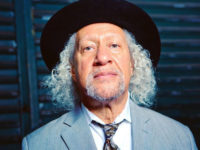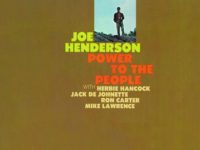There are some good news coming for fans of both vinyl and hard-to-find early 70s fusion jazz grooves. On July 28, 2017, the Jazz Dispensary will put forth 180-gram specimens of overlooked recordings by two saxophones aces who were in full-on experimentation mode during this time: Harlem Bush Music – Uhuru by Gary Bartz and his NTU Troop, and The Elements by Joe Henderson.
Bartz and Henderson were both leading records under the Milestone label that put some distance from their post-bop beginnings. While much of the jazz practitioners of their generation began to embrace rock-jazz fusion, both Bartz and Henderson blended their jazz with R&B, avant-garde and political consciousness. Moreover, they did this without fully abandoning their straight-ahead past. The modalism that was all the rage in the 60s still guided the structure of much of their performances in this period but now applied to new ideas, and the results in many ways go against the grain of where most of jazz outside of the Art Ensemble of Chicago was while they were making this music. Even today, few jazz artists — with Kamasi Washington a notable exception — are mining this field today, which makes these two reissued releases fascinating time capsules that also happen to contain some great performances.
Both Bartz and Henderson may have made better records (especially Henderson), but we ignore these records at the risk of not getting a complete picture of their artistic development and capabilities. Below are brief recaps of these albums:
Harlem Bush Music – Uhuru (orig. released 1971)
Bartz made this record during the time he was in Miles Davis’ band, which put him near the epicenter of the phenomenon where jazz was exploding in many directions, out toward avant-garde, R&B, rock and African folk music. Bartz’s NTU Troop took in many of these developments at once, but undertaking an approach that in several respects greatly differed from Miles’ conception about fusion. The saxophonist’s small combo included Junie Booth and Ron Carter on bass, drummer Harold White and percussionist Nat Bettis, with Andy Bettis handling vocals. Bey, who had by this time had already lent his voice to recordings by Max Roach, Duke Person and Horace Silver, shares the spotlight with Bartz.
“Blue (A Folk Tale)” reveals the breadth of the NTU Troop’s music, veering between funk, hard bop and straight blues and Bey’s mastery of a both jazz and blues made him well suited for this. Bey’s poet-like delivery against the RnB/jazz backdrop makes Uhuru more akin to the Gil Scott-Heron recordings of the same time. Uhuru is well in line with the social protest of the turbulent time in which this was conceived: it’s defiant and anti-establishment — from the “hell no!” exhortations on “Uhuru Sasa” to the unabashedly pro-North Vietnamese jazz hymn “Vietcong” — and at other times a little on the mystical side, like the otherworldly, Sun Ra lyric of “The Planets,” which is otherwise a solid straight-up swinging number where Bartz’s chops are in fine form.
The Elements (orig. released 1973)
The appearance of Alice Coltrane alone makes this a special date, since Mrs. Coltrane didn’t take on the sideman role much after her husband’s death, and her contributions on piano and harp are indispensable for making Henderson’s expansive vision for the record work credibly. The Elements comes during a period when Henderson pushed forward from the hard-bop that define his Blue Note work in the 60s (some of the finest ever to come from hard bop and Blue Note) to the Afrocentric, ethnic fusion explorations that marked his work from the late-60s through the mid-70s.
The four, long spiritual grooves, which also feature Michael White on violin, Kenneth Nash on percussion and the late, great Charlie Haden on bass, could in one sense be thought of as Henderson taking a stroll on the hallowed grounds of John Coltrane’s late period (and his widow’s large presence on these recordings lend itself to that notion). But even when the overall approach is the same, the results feel different, because Henderson’s own language on the tenor sax is too strong and identifiable in its own right. Further, the RnB influence found on these songs make this record more evocative of Trane protégé Pharoah Sanders. For a change-up from the driving rhythms of “Fire” and “Earth,” check out Henderson’s wild, effects-laden saxophone flights alongside Haden’s high-end throbs on the psychedelic “Water.”
- James Brandon Lewis Quartet – ‘Abstraction Is Deliverance’ (2025) - May 27, 2025
- Soft Machine – ‘Drop’ (1971, 2025 remaster) - May 21, 2025
- Marshall Allen’s Ghost Horizons – ‘Live In Philadelphia’ (2025) - May 19, 2025




